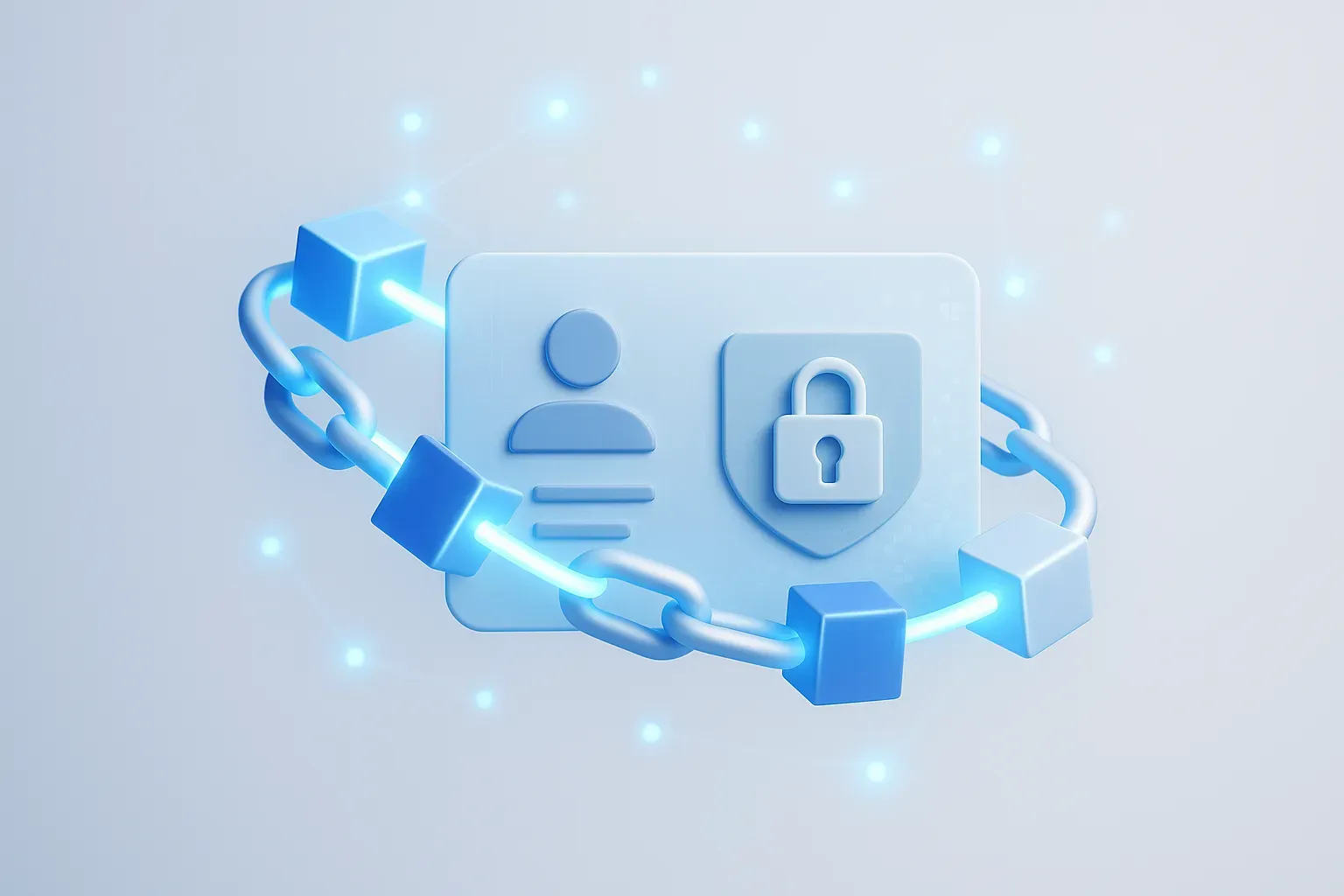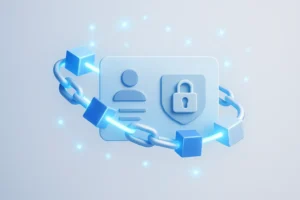Digital identity management is a critical component of modern IT infrastructure. This article explores key strategies for ensuring long-term sustainability in this field. Drawing on insights from industry experts, it offers practical guidance for building flexible, scalable, and future-proof digital identity systems.
- Build on Open Standards for Future-Proofing
- Decouple Compute from Memory Limitations
- Maintain Data Ownership and Export Capabilities
- Implement Integration Architecture from Day One
- Limit Custom Work for Easier Scaling
- Design for Continuous Adaptability
- Create a Modular and Evolving Foundation
- Develop Flexible Architecture for Tomorrow’s Needs
- Avoid Single Central Control Points
- Build Compliance Flexibility into Systems
- Prioritize Open Standards and Modular Design
- Ensure Flexibility and Integration Capabilities
- Adopt Open-Source and Cloud-Native IAM Solutions
Build on Open Standards for Future-Proofing
As SEO evolves alongside broader digital infrastructure, one key consideration often overlooked by organizations is interoperability through standards-based architecture.
Scalability isn’t just about adding users or platforms — it’s about future-proofing your system to adapt to new technologies, regulatory environments, and user expectations. A closed, fragmented identity stack may function well in the short term but creates long-term friction when integrating new tools, expanding to new markets, or complying with evolving data privacy regulations.
My recommendation: Build on open standards like OAuth 2.0, OpenID Connect, and SCIM.
These frameworks allow your identity management system to:
- Seamlessly integrate with diverse platforms (CRMs, cloud services, analytics suites, etc.)
- Support single sign-on (SSO) and federated identity across internal and external ecosystems
- Ensure secure token-based access without compromising user experience
- Enable centralized user provisioning and deprovisioning at scale
When I’m optimizing digital ecosystems from an SEO and analytics perspective, I often encounter clients whose CMS, analytics, and CRM platforms are siloed — making user tracking, attribution modeling, and personalized content delivery difficult. This problem traces back to fragmented identity management.
Key Benefits of Standards-Based Identity Management:
- Security & Compliance: Regulatory compliance (e.g., GDPR, PIPEDA, HIPAA) is easier when access controls and user data governance are standardized.
- Scalability: Whether you’re onboarding 10 users or 10,000, identity federation and role-based access simplify management across platforms.
- Cross-platform Optimization: For SEO consultants like myself who rely on clean data flows between GA4, tag managers, and personalization engines, seamless identity mapping ensures accurate attribution and user journey tracking.
Digital identity management isn’t just an IT concern — it directly impacts marketing efficiency, customer experience, and long-term digital growth. Organizations that future-proof their identity layer using open, flexible protocols set themselves up for scalable growth, reduced operational friction, and improved data reliability across every digital channel.
In the era of interconnected systems and personalized experiences, your digital identity stack should be as agile and adaptable as your SEO strategy.
 Christian Carere
Christian Carere
CEO, Digital Ducats Inc.
Decouple Compute from Memory Limitations
I’ve seen how memory bottlenecks can cripple digital identity systems when they hit scale.
One key consideration: Architect your identity infrastructure to decouple compute from memory limitations before you need it. Most organizations build identity systems that work fine for thousands of users but collapse when authentication requests spike or when AI-driven fraud detection kicks in. We saw this with SWIFT’s platform — their identity and transaction systems needed to analyze enormous datasets for anomaly detection, but traditional memory constraints made real-time processing impossible.
With our platform, SWIFT can now provision unlimited memory on-demand across their data center without new hardware. This means their identity management can scale instantly from normal operations to handling massive authentication surges during peak trading periods. The 52% CO2 reduction we delivered also means their infrastructure scales sustainably.
The companies that survive long-term are those that plan for 100x growth in their identity workloads, not just 2x. Memory constraints kill more scaling plans than any other infrastructure limitation I’ve encountered.
 John Overton
John Overton
CEO, Kove
Maintain Data Ownership and Export Capabilities
I’ve learned that the biggest threat to long-term sustainability isn’t technical failure — it’s vendor lock-in and data portability.
Maintain data ownership and export capabilities across all identity management platforms. When we migrated a Fortune 1000 client’s global network systems, we found they couldn’t extract 8 years of user authentication data from their previous vendor. This created a 6-month delay and $2M in additional integration costs.
We’ve seen this pattern repeat with marketing clients who built their entire lead qualification system inside a single CRM, only to find themselves trapped when scaling required better tools. The companies that scale successfully are obsessive about contractual data export rights and regular backup protocols.
I always tell clients: if you can’t get your identity data out of a system within 48 hours, you don’t own your digital infrastructure — you’re just renting it. Build like you’ll eventually outgrow every platform, because if you’re successful, you will.
 Gary Gilkison
Gary Gilkison
CEO, Riverbase
Implement Integration Architecture from Day One
I’ve spent years helping service businesses transition from complete operational chaos to scalable, sellable companies, and the biggest mistake I see is treating digital systems like a “set it and forget it” solution.
Build with integration architecture from day one. At Valley Janitorial, we reduced their owner’s operational hours by over 70% because we connected their CRM, scheduling, payroll, and invoicing systems to talk to each other automatically. No manual data entry between platforms.
Most businesses I work with have 5-8 different software tools that don’t communicate. When BBA came to us managing programs across 15+ states, they were drowning in manual tasks just moving data between systems. We eliminated 45 hours per week of redundant work by creating automated workflows between their platforms.
The scalability comes from treating your tech stack like plumbing — everything needs to connect and flow together. If you’re adding new software that requires manual bridges to your existing systems, you’re building future bottlenecks, not solutions.
 Keaton Kay
Keaton Kay
Founder & CEO, Scale Lite
Limit Custom Work for Easier Scaling
A key turning point I’ve noticed repeatedly, in all sorts of projects, is that limiting the amount of custom work you do actually makes it much easier to scale up in the future. For example, when GE insisted on highly customized identity systems, their teams ended up with systems that were extremely complex and a nightmare to upgrade. Too many custom changes don’t just create technical debt at the start. They keep costing you time and resources every time you try to update, connect to something new, or expand.
In my own agency’s experience working with complicated B2B platforms and education websites, the projects that adhered to standard, out-of-the-box identity options and changed their business processes to fit those features, rather than the other way around, had a much smoother path when it came time to grow. This not only made it much faster to do major upgrades, literally sometimes saving more than half the time, but it also meant there were fewer issues to fix when things went wrong.
A common scenario I’ve seen is that teams start building their own custom solutions for things like moving users or managing access, thinking their needs are unique. But then, 12 to 18 months later, new releases include exactly these features. But now they’re built-in, fully supported, tested, and work well with other systems. At our agency, we now always do a thorough review of what the product can already do, and we seriously question every customization by asking, “What would actually go wrong if we just used the standard method?” This single change has shifted the focus from, “How should we build this ourselves?” to, “Why not use what’s already there?”
This has saved us lots of money and frustration, not to mention abandoned, custom code that no one wants to maintain. Gartner has pointed out that most organizations that let their technical debt get out of control will miss their digital transformation goals. My advice to IT leaders, before you start writing custom code, is to use every standard feature your platform offers and only build your own solutions for things that really need it. Give yourself the best chance at long-term flexibility. Don’t let technical debt slowly destroy your ability to scale next year.
 Steve Morris
Steve Morris
Founder & CEO, NEWMEDIA.COM
Design for Continuous Adaptability
Long-term sustainability and scalability in digital identity management hinge on a company’s ability to design for continuous adaptability. In my consulting work for multinational retailers and membership organizations, I have consistently seen that the most resilient solutions are those that are built on open, interoperable architectures — not proprietary systems that lock you in or become obsolete as your business evolves.
One key consideration is the deliberate selection and integration of standards-based identity protocols from the start. This may sound technical, but the business impact is immediate: standards such as SAML, OpenID Connect, and OAuth2 are not just about compliance or security — they are about future-proofing your digital ecosystem. When organizations commit to these protocols, they retain flexibility to add new platforms, merge with partners, or pivot to new business models without re-engineering core systems. I have advised a number of global clients who initially deployed fragmented or custom-built identity solutions; as their digital footprint grew, these systems became a bottleneck, leading to operational risk, higher costs, and user friction.
During an initiative benchmarking digital transformation leaders, we observed that companies with open, standards-driven identity management were able to onboard new digital channels and third-party services up to three times faster than those with closed systems. This directly enabled their marketing and commerce teams to test new offerings and customer journeys without lengthy IT projects. The lesson is clear: your identity platform should never be the constraint on your growth ambitions.
Investing in standards-based solutions is not just an IT decision — it is a core business strategy. It protects you against vendor risk, keeps integration costs predictable, and allows your organization to scale without technical debt piling up. As customer expectations and regulatory requirements shift, you will have the agility to respond decisively, rather than scrambling to retrofit legacy systems. For leadership teams driving digital transformation, this is the kind of operational clarity that supports both immediate performance and long-term growth.
 Eugene Mischenko
Eugene Mischenko
President, E-Commerce & Digital Marketing Association
Create a Modular and Evolving Foundation
One key consideration for ensuring the long-term sustainability and scalability of digital identity management solutions is designing with adaptability at the core — particularly the ability to evolve alongside new technologies and changing security requirements.
Technology ecosystems are constantly shifting. What works today — such as biometric authentication or multi-factor methods — might be insufficient tomorrow as cyber threats grow more sophisticated and user expectations evolve. By adopting a modular and standards-based architecture (such as supporting OAuth 2.0, OpenID Connect, or FIDO2), organizations can plug in new authentication mechanisms, integrate emerging technologies, and comply with updated regulations without overhauling their entire system.
Equally important is ongoing investment in threat intelligence and security posture management. Scalable identity solutions must include regular updates, automated threat detection, and the flexibility to implement new risk-based policies. For example, integrating AI-driven behavior analytics can help identify anomalies in real-time and reduce reliance on static rules.
In short, future-proofing identity management is not about finding a one-time solution — it’s about building a foundation that evolves. By staying technology-agnostic, emphasizing interoperability, and continuously adapting to the threat landscape, organizations can maintain trust, performance, and security at scale for years to come.
 Sanjay Prajapat
Sanjay Prajapat
Tech Content Writer, igmGuru
Develop Flexible Architecture for Tomorrow’s Needs
One key factor in making digital identity management sustainable and scalable is designing for change. Too many systems are built around today’s tools instead of tomorrow’s needs. A flexible, modular architecture — built on open standards and API-first thinking — will age far better than any single vendor solution. I’ve seen startups scale fast and get stuck just as fast because they hardwired identity into legacy workflows. It’s important to leave room to swap out services, expand user types, and meet new compliance rules without re-architecting from scratch. Identity isn’t a one-and-done project; it’s a living system. Treat it like one.
 Jason Hishmeh
Jason Hishmeh
Entrepreneur, Business & Financial Leader, Author, Cofounder, Increased, Varyence and Get Startup Funding
Avoid Single Central Control Points
We’ve learned that if you want your digital identity systems to last and scale, you have to avoid building them around one central control point.
Many companies opt for what seems easiest at the start, perhaps a single identity provider or tightly coupled user data system. It works in the short term, but it usually creates trouble later. Systems become harder to scale, update, and secure.
What has worked better for us is building with flexibility from day one. We separate the identity logic from other parts of the system. That way, if our client needs to switch identity providers, or add support for something like single sign-on or multi-tenant access later, we’re not rebuilding the entire product.
We also try not to hold all the user data in one place. We break it up based on risk and compliance needs. This approach makes it easier to handle regulations like GDPR or CCPA if the business expands.
In short: don’t overcommit to one setup early. Design it so your future team or client has room to make changes without breaking everything. That’s what makes it sustainable.
 Vikrant Bhalodia
Vikrant Bhalodia
Head of Marketing & People Ops, WeblineIndia
Build Compliance Flexibility into Systems
The critical consideration for sustainable digital identity management involves building compliance flexibility that can adapt to evolving regulatory requirements across different jurisdictions and industries. Identity management systems must accommodate changing privacy laws, data sovereignty requirements, and security standards without requiring fundamental architectural changes.
This forward-thinking approach becomes essential as organizations expand globally or enter new market sectors with different regulatory environments. For instance, GDPR compliance requirements differ significantly from emerging data protection laws in other regions, and identity systems must handle these variations seamlessly. The sustainable solution involves implementing privacy-by-design principles and configurable compliance frameworks that can adjust to new regulatory requirements through policy updates rather than system overhauls. Organizations should prioritize identity platforms that separate compliance logic from core functionality, enabling rapid adaptation to changing legal landscapes while maintaining operational continuity and user experience consistency.
 John Pennypacker
John Pennypacker
VP of Marketing & Sales, Deep Cognition
Prioritize Open Standards and Modular Design
Building your identity infrastructure on open standards and modular design is crucial if you want long-term sustainability and scalability.
We have seen many companies face problems when their identity solution is too closely associated with one platform or vendor. Things might go well at the beginning, but as your business grows, that rigidity may become a big problem. It’s far better to opt for solutions that work with a variety of protocols so you can stay adaptable and make easier integrations in the future.
Also, I would prioritize solutions that have robust API access, role-based access control, and solid compliance support. Being able to handle more users is only one aspect of scalability. It also means being able to adjust as your identity needs change. You can avoid having to start over when you build with these standards, while also giving yourself more flexibility.
 Sergio Oliveira
Sergio Oliveira
Director of Development, DesignRush
Ensure Flexibility and Integration Capabilities
One key consideration for ensuring the long-term sustainability and scalability of digital identity management solutions is prioritizing flexibility and integration capabilities. As organizations grow and their needs evolve, their identity management systems must be able to easily integrate with new technologies, applications, and services. This includes supporting diverse authentication methods (e.g., biometrics, multi-factor authentication), adapting to changing security standards, and ensuring compatibility with cloud-based or on-premises infrastructures. By selecting scalable solutions that offer robust APIs and adaptability, organizations can ensure their digital identity systems evolve with their business needs without requiring frequent, costly overhauls. This flexibility allows organizations to maintain secure and efficient identity management as they scale.
 Kristiyan Yankov
Kristiyan Yankov
Growth Marketer, Co-Founder, AboveApex
Adopt Open-Source and Cloud-Native IAM Solutions
1. Adopt open-source, API, and microservices-based IAM solutions that are easy to customize and develop further, leveraging cutting-edge technologies.
2. Make use of IAM reference architecture for building custom IAM solutions. Use open standards like OAuth 2.0, OpenID Connect, SAML, and FIDO2 that support interoperability.
3. Utilize cloud-native solutions and implement a multi-cloud strategy for identity management.
4. Implement passwordless authentication or, for systems that use passwords, establish a password rotation policy with stringent password character constraints to improve the strength of the passwords.
5. Design systems that comply with regulations such as GDPR and HIPAA.
6. Implement dynamic authorization leveraging policy-based access control in identity systems for better scalability, maintainability, and context-aware access decisions.
 Anant Wairagade
Anant Wairagade
Senior Engineer(Fintech)













